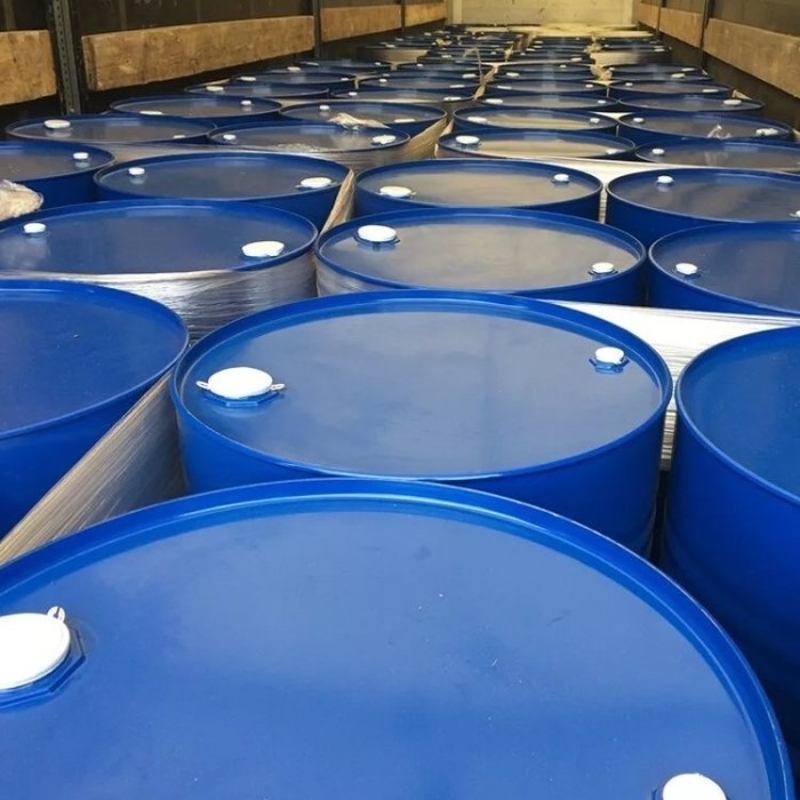Catalyst and Auxiliary
- • Antioxidants (109)
- • UV Absorbers (92)
- • Polyethylene Glycol Derivatives (66)
- • Fluorescent Brightener (62)
- • Plastic Rubber Chemicals (89)
- • Polymer (464)
- • Precious Metal Catalysts (239)
- • Coupling Agent (8)
- • Zeolite (5)
- • Flame Retardants (10)
- • Petrochemical (22)
Related News
-
ECHEMI High Quality Inquiries (1-5 July)
2024-07-08 -
The Global Polyethylene Market May Not Recover Until 2025
2023-12-01 -
S & P Global: Global polyethylene and acryline profit margins will remain low
2023-04-03 -
Competition in polyethylene industry willintensify with 2.2 million tons/year capacity coming on stream
2022-11-15 -
Global polyolefin market indicators will remain depressed
2022-11-02 -
Dow Cuts Production by 15%! Global Polyethylene Production Capacity Declines!
2022-09-01
Polyethylene Glycol Derivatives
3,6,9,12,15,18-Hexaoxaoctacosan-1-ol
(5168-89-8)3
(CH
2
)
16
COO
-
). These have twoparts: a nonpolar part (th
-
![HEXAETHYLENE GLYCOL MONODECYL ETHER buy HEXAETHYLENE GLYCOL MONODECYL ETHER]()
Industrial Grade / 99%
-
![HEXAETHYLENE GLYCOL MONODECYL ETHER buy HEXAETHYLENE GLYCOL MONODECYL ETHER]()
-
![HEXAETHYLENE GLYCOL MONODECYL ETHER buy HEXAETHYLENE GLYCOL MONODECYL ETHER]()
Industrial Grade / 99%
-
![Hexaethylene glycol monodecyl ether buy Hexaethylene glycol monodecyl ether]()
Request for quotation , get quotes from more suppliers.
-
- / 99.00%
-
![POLY(ETHYLENE GLYCOL) BIS(CARBOXYMETHYL) ETHER buy POLY(ETHYLENE GLYCOL) BIS(CARBOXYMETHYL) ETHER]()
Industrial Grade / 99.00%
-
![POLY(ETHYLENE GLYCOL) BIS(CARBOXYMETHYL) ETHER buy POLY(ETHYLENE GLYCOL) BIS(CARBOXYMETHYL) ETHER]()
Industrial Grade / 99%
-
![α,ω-Dicarboxyl Poly(Ethylene Glycol) buy α,ω-Dicarboxyl Poly(Ethylene Glycol)]()
Request for quotation , get quotes from more suppliers.
Methoxypolyethylene glycol maleimide
(99126-64-4)-
Industrial grade / 99%
-
Industrial Grade / 95%
-
![MONO-METHYL POLYETHYLENE GLYCOL 5'000 2-MALEIMIDOETHYL ETHER buy MONO-METHYL POLYETHYLENE GLYCOL 5'000 2-MALEIMIDOETHYL ETHER]()
Industrial Grade / 99%
-
![MONO-METHYL POLYETHYLENE GLYCOL 5'000 2-MALEIMIDOETHYL ETHER buy MONO-METHYL POLYETHYLENE GLYCOL 5'000 2-MALEIMIDOETHYL ETHER]()
Request for quotation , get quotes from more suppliers.
3,6,9,12-Tetraoxaeicosan-1-ol
(19327-39-0)-
Industrial Grade / 99%
-
Pharmacy Grade / 99%
-
![Tetraethyleneglycol monooctyl ether buy Tetraethyleneglycol monooctyl ether]()
Industrial Grade / 99.0%
-
![tetraethylene glycol monooctyl ether buy tetraethylene glycol monooctyl ether]()
Request for quotation , get quotes from more suppliers.
Polyethylene glycol 2-ethylhexyl ether
(26468-86-0)-
top / 99%
$3.26/KG EXW
-
![OCTAETHYLENEGLYCOL OCTYL ETHER CAS NO 26468-86-0 buy OCTAETHYLENEGLYCOL OCTYL ETHER CAS NO 26468-86-0]()
Industrial Grade, Feed Grade, Food Grade, Pharma Grade / 99%
$11.11/KG EXW
-
![OCTAETHYLENEGLYCOL OCTYL ETHER buy OCTAETHYLENEGLYCOL OCTYL ETHER]()
-
![EH-6 buy EH-6]()
Industrial Grade / pharmaceutical grade / 99%
Request for quotation , get quotes from more suppliers.
-
![DIETHYLENE GLYCOL MONO-METHACRYLATE buy DIETHYLENE GLYCOL MONO-METHACRYLATE]()
Industrial Grade / 99%
-
![DIETHYLENE GLYCOL MONO-METHACRYLATE buy DIETHYLENE GLYCOL MONO-METHACRYLATE]()
-
![DIETHYLENE GLYCOL MONO-METHACRYLATE buy DIETHYLENE GLYCOL MONO-METHACRYLATE]()
-
![DIETHYLENE GLYCOL MONO-METHACRYLATE buy DIETHYLENE GLYCOL MONO-METHACRYLATE]()
Industrial Grade / 99%
Request for quotation , get quotes from more suppliers.
Polyethylene glycol octyl ether
(27252-75-1)-
![POLYETHYLENEGLYCOL 600 MONOOCTYL ETHER CAS NO 27252-75-1 buy POLYETHYLENEGLYCOL 600 MONOOCTYL ETHER CAS NO 27252-75-1]()
Industrial Grade, Feed Grade, Food Grade, Pharma Grade / 99%
$11.11/KG EXW
-
![Octan-1-ol, ethoxylated buy Octan-1-ol, ethoxylated]()
Different Grade / 99.9%
$0.1/KG EXW
-
![2-(Octyloxy)ethanol buy 2-(Octyloxy)ethanol]()
-
![Polyethyleneglycol 200 Monooctylether buy Polyethyleneglycol 200 Monooctylether]()
Request for quotation , get quotes from more suppliers.
Biotin-PEG2-Acid
(1365655-89-5)-
Pharmacy Grade / -
$1/G EXW
-
Industrial Grade / 95%
-
![Biotin-PEG2-Acid buy Biotin-PEG2-Acid]()
Industrial Grade / 99%
-
![Biotin-PEG2-Acid buy Biotin-PEG2-Acid]()
Request for quotation , get quotes from more suppliers.
-
- / 99.00%
-
-
![Solutol HS 15 buy Solutol HS 15]()
Industrial Grade / 99%
-
![Solutol HS 15 buy Solutol HS 15]()
Request for quotation , get quotes from more suppliers.
Peginterferon alfa-2b
(215647-85-1)-
industrial Grade / 98%
-
![Peginterferon alfa-2b CAS NO 215647-85-1 buy Peginterferon alfa-2b CAS NO 215647-85-1]()
Industrial Grade, Feed Grade, Food Grade, Pharma Grade / 99%
$11.11/KG EXW
-
![Peginterferon alfa-2b buy Peginterferon alfa-2b]()
-
![Peginterferon alfa-2b buy Peginterferon alfa-2b]()
Industrial Grade / 99%
Request for quotation , get quotes from more suppliers.
Source Polyethylene Glycol Derivatives Raw Materials by Region
More Information
Polyethylene glycol (PEG) is an important chemical polymer that has found its application in numerous fields due to its flexibility and non-toxicity. It exists in several molecular weights, which set its properties and is classified as polyethylene glycol. This categorization guarantees that PEG fits the specific needs of various applications from the pharmaceutical to the industrial application. The polyethylene glycol solution is readily soluble, non-toxic and chemically stable, which makes it an ideal ingredient for formulation that demands reliability in terms of performance.
The versatility of polyethylene glycol makes it one of the most important raw materials in many industries. Its adaptability allows it to be used effectively in:
● Pharmaceutical excipients in drug delivery systems
● Samples of personal care products include creams, lotions and toothpaste.
● Lubricants for industrial and anti-foaming agents.
● Food processing's role in stabilizing and emulsifying
● Textile manufacturing process for fabric treatments.
● Paints and coatings to be used as a binder or a dispersing agent





























